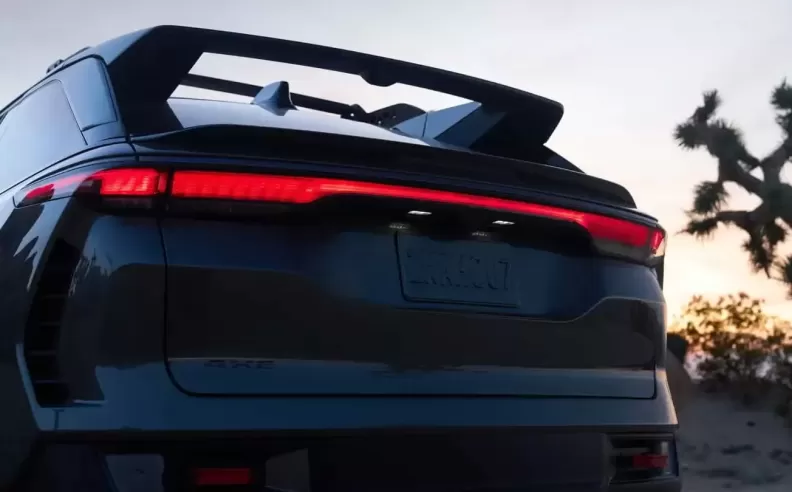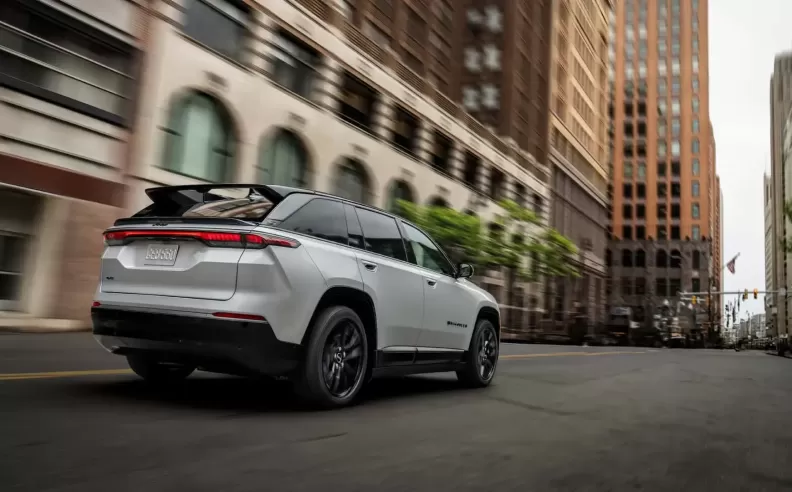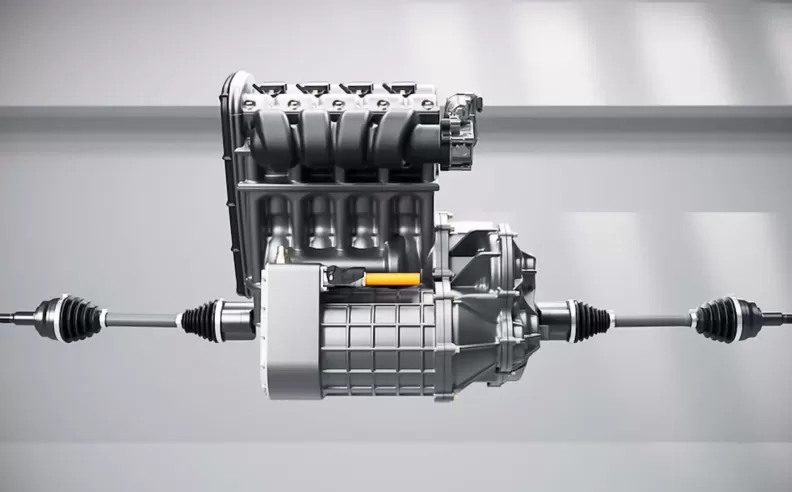
Jeep’s all-electric Wagoneer S has achieved an impressive milestone in electric vehicle (EV) design, boasting a range of over 480KM. A key factor behind this achievement is its innovative aerodynamics, particularly the hidden rear wing that contributes significantly to its efficiency. This unique design feature enables the Wagoneer S to rival the aerodynamic performance of the first-generation Toyota Prius, while maintaining the robust and stylish silhouette that Jeep enthusiasts expect.

Viewed from the side, the all-electric Jeep Wagoneer S resembles most two-row luxury SUVs, bearing a striking similarity to the contemporary Grand Cherokee in the greenhouse. However, a glance at the rear reveals a distinct difference: a hidden, pass-through wing mounted atop sail-shaped D-pillars. This wing, combined with a rear window that has a much shallower angle and longer taper than the typical near-vertical tailgate, enhances the vehicle's aerodynamics while preserving its formal, boxy appearance.
“To hit the aero target, we kept realizing that we had to create a very tapered profile,” explained Ralph Gilles, Stellantis Chief Design Officer, in an interview with Motor1. “We had to taper it to basically a tadpole shape, and none of us liked the look of it. So the wing became a solution to keep the profile attractive and get the benefits of the aero so it doesn't spoil the design.”
Gilles described how a traditional SUV shape tends to create a wake of turbulence as it moves forward, due to the air being disrupted and not efficiently guided back together. A teardrop or tadpole silhouette minimizes this turbulence by closing the air gap behind the vehicle. For the Wagoneer S to maximize its battery range, designers needed to make it aerodynamically efficient, which led to the development of the unique rear wing.
Initially conceived merely as a stylish element and a mount for the rear-view camera, the wing evolved into a critical aerodynamic component. “We ended up twisting it and turning it and finding that we can make it guide the air behind the vehicle, improving the aerodynamics,” Gilles said. The result is a drag coefficient of 0.294, on par with a first-generation Toyota Prius, making the Wagoneer S the most aerodynamically efficient Jeep ever produced.
“The really sloped roofline is absolutely one of the biggest enablers of how we got the 0.294 [Cd],” stated Alison Rahm, Vice President of Product Development at Stellantis. “It was a lot of work there to get the roof down and then be able to manage the air as it comes off the roof, which the wing lets us do.”
Engineering this wing presented significant challenges. Rahm explained the difficulties of stabilizing the wing without compromising the vehicle’s aesthetics or adding unnecessary weight. “What I tried to do for a long time was to put a center touchdown to the roof, because it hangs so far out, and there's so much mass in it,” she noted, acknowledging that Gilles was strongly opposed to this idea. Ensuring that the digital rearview mirror camera, located in the wing, did not oscillate was also a crucial factor. “Finding the right way to get the stability without making it ugly, without adding all this unnecessary weight that was probably one of our greatest challenges.”
The Jeep Wagoneer S stands as a testament to innovative design and engineering, blending aerodynamic efficiency with the iconic aesthetic appeal of a Jeep. This hidden rear wing exemplifies how thoughtful engineering solutions can push the boundaries of what is possible in electric vehicle design, leading to substantial improvements in performance and efficiency.

Wael is an automotive content writer specializes in creating written content for Motor 283. Producing a wide range of content, including blog posts, articles, product descriptions, reviews, and technical guides related to cars, trucks, motorcycles, and other vehicles, with an unprecedented passion for cars, and motorcycles.
